#franklin furnace archive
Photo
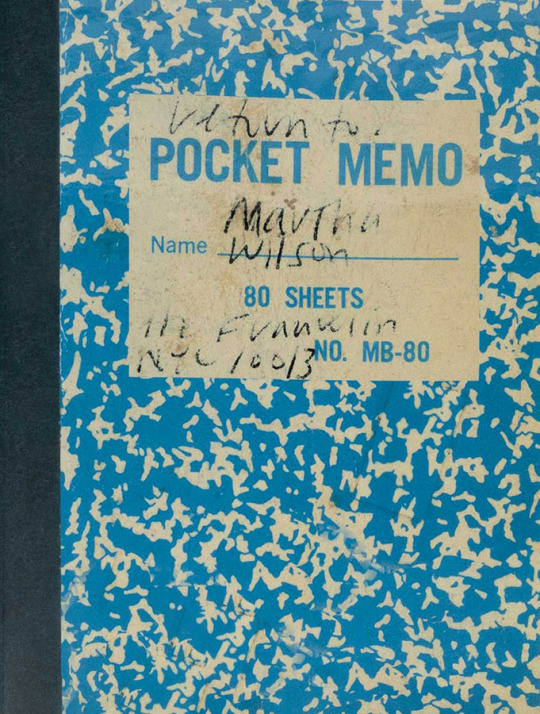
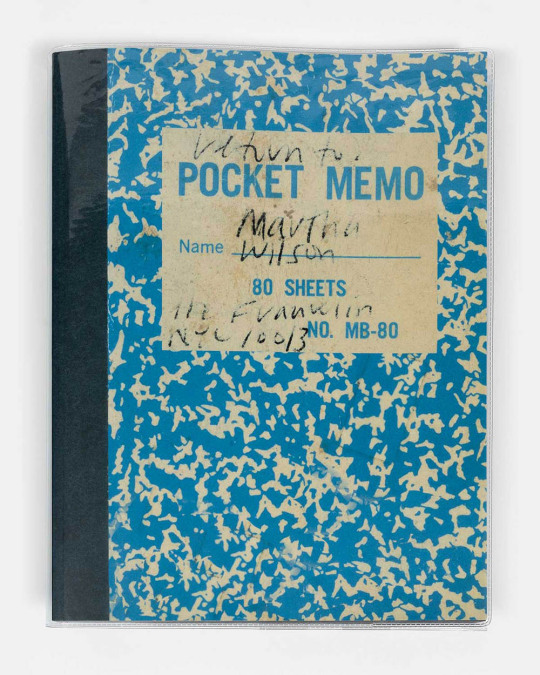

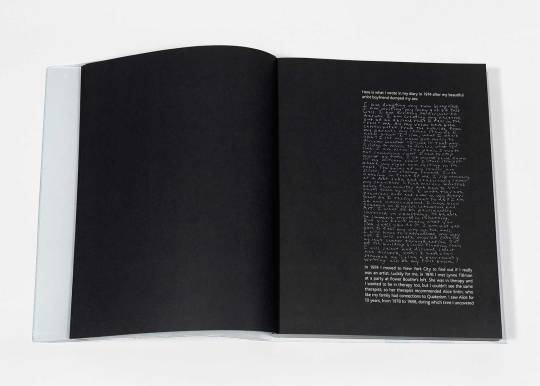
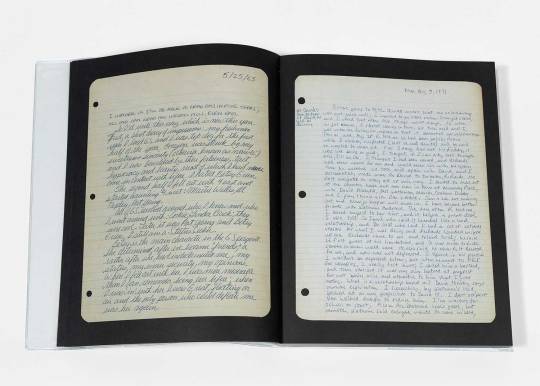
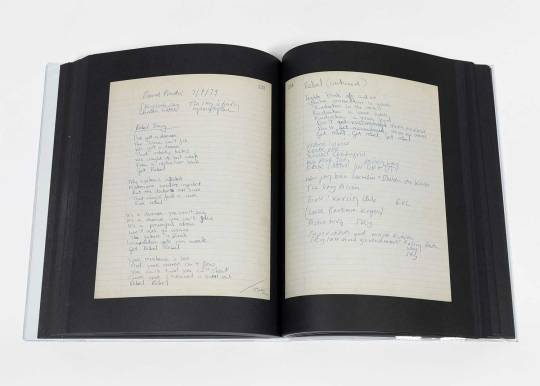
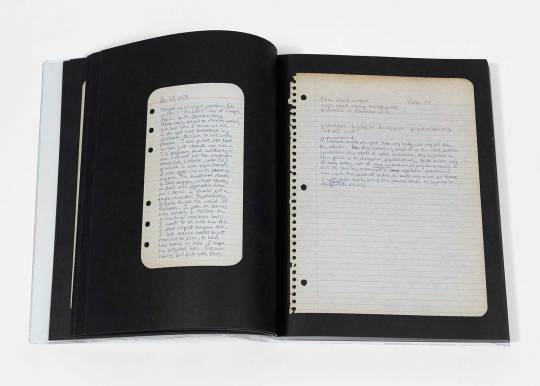
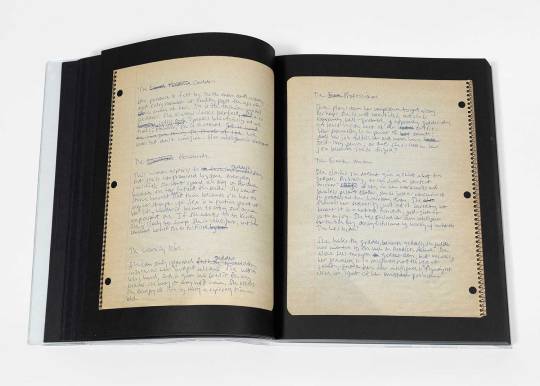

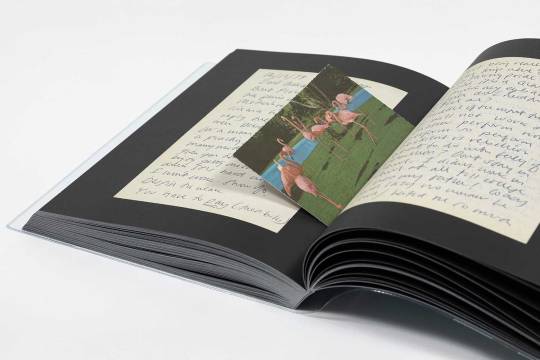
Martha Wilson, Journals, mfc-michèle didier, Paris and Bruxelles-Brussel, 1965-1983 / 2021, Printed and bound by Snel, Includes a postcard as a bookmark, Covered with a reading jacket, Edition of 400 copies signed by the artist [© Martha Wilson / mfc-michèle didier] [Artists' Books and Multiples, Sackville, New Brunswick]
#graphic design#art#manuscript#handwriting#notebook#journal#book#catalog#catalogue#photography#cover#martha wilson#franklin furnace archive#mfc michèle didier#snel#1960s#1970s#1980s#2020s
92 notes
·
View notes
Photo

More Money: Global Artists Embellish Bills, Comment on Powerful Currency. Book by Jo-Anne Echevarria-Myers THE PROJECT INVOLVES THE ‘MODIFICATION’ OF A DOLLAR BILL, NOT ILLEGAL IF IT IS ART! MORE MONEY has been accepted for inclusion in the collection of The Franklin Furnace Archive NYC, The University of Pennsylvania Fine Arts Library, School of Visual Arts NYC and Harvard University Fine Arts Library. . . . #art #artists #moremoney #joanneechevarriamyers #artistjoanneechevarriamyers #joanneechevarriamyersart #globalartproject #artproject #schumiart https://www.instagram.com/p/ClghoqPoGiU/?igshid=NGJjMDIxMWI=
#art#artists#moremoney#joanneechevarriamyers#artistjoanneechevarriamyers#joanneechevarriamyersart#globalartproject#artproject#schumiart
0 notes
Photo
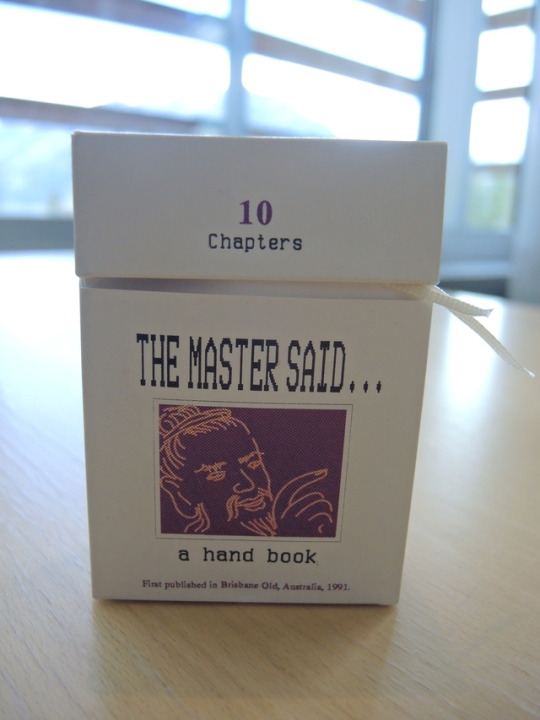


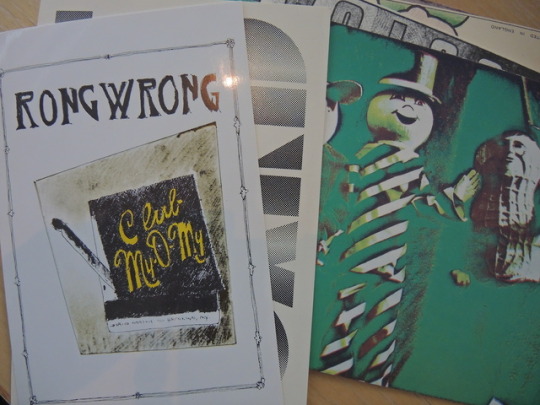






Artists’ Book Display for the week of July 16th, 2019
The Master said... a handbook Zhang Lansheng- Brisbane: Grahame Galleries, 1991
Image bank postcard show 1972 by Michael Morris- Vancouver, BC: Image Bank, 1972
Franklin Furnace archive artists book bibliography volume II published by Frank Furnace 1978
Kunstler bucher, artists books, books as art: ausstellungen dokumentationen kataloge kritiken by Artur Brall- Frankfurt am Main: Verlag Kretschmer & Grosmann, 1986
Advantages of being a woman artist by Guerrilla Girls- Leeds: Leeds Postcards, 1990
#Artists' Book Display#Book Display#Artists' Books#Books#Art#Artists' Book#Artists Books#Art Books#Library Display#Weekly Display#Artists' Book Collection#Book Collection#Zhang Lansheng#Michael Morris#Frank Furnace#Artur Brall#Guerilla Girls#Banff#Alberta#Banff Centre#The Banff Centre#Banff Centre Library#Library#Paul D Fleck Library and Archives
3 notes
·
View notes
Photo

Crystal Z. Campbell (A ‘03)
Franklin Furnace Fund Recipients 2020-21
Franklin Furnace Archive, Inc.
0 notes
Text
Eva Ostrowska

https://www.evaostrowska.com
'Last year I had an accident and had to spend my recovery time into a bed for more than three months. During this time, my ritual routine was to watch at a lot of contemporary photography. I started to feel tired of always seeing representation of human bodies. So I decided to create my own bodies. It took me half a year to recover and this time was used to design and create the costumes. I am sharing this personal fact to spread a message that whatever happens in life, always try to do a work of alchemy with it, transform the negative experiences into positive ones. »Love was Sweet and Warm as a Tangerine Sunrise is a summer love-story between a man and a woman made of wool. The scene takes place on a paradisiac tropical Island in the Seychelles. It is the first of a long « wool-mance » series about love- relationships.’
Eva Ostrowska is a visual artist working in the cross-section of performance, textile and digital mediums.
She holds a Master Degree from L’Ecole des Beaux Arts in Bordeaux and the Sorbonne University in Paris. Half-French, half-Ukrainian, Ostrowska begun as a free-lancer photographer in New York City working for the newspapers such as The New York Times. In 2016, she married herself after finding out that her former fiance had cheated on her a few months before their wedding. Ostrowska is devoted to reimagining the iconography of modern love-stories using woolen costumes and storytelling. Her work has appeared in various international publications and her self-published artist book is both into the permanent collection of the Museum of Modern Art New York (MoMA) and the Franklin Furnace Archives of Brooklyn.
Text from Phroom Magazine link here - https://phroommagazine.com/eva-ostrowska-2/
0 notes
Text
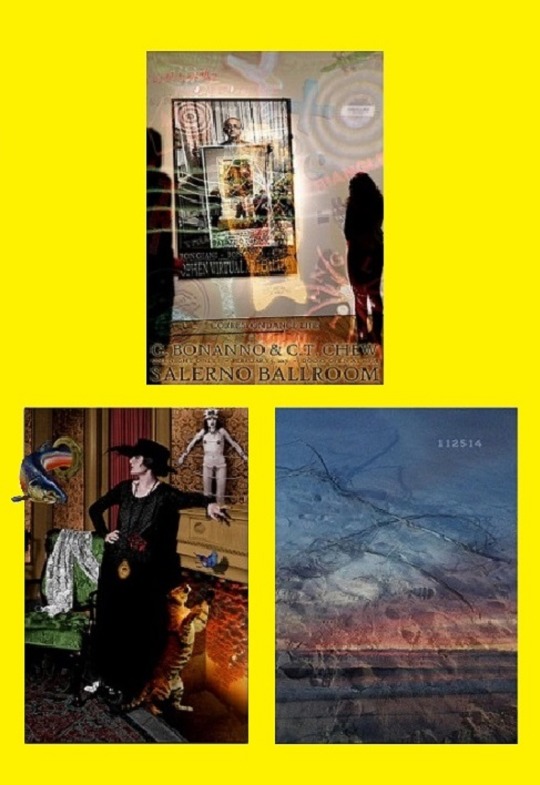
Pavilion Lautania Virtual Valley / Spazio Ophen Virtual Art Museum
Mostra Personale di Carl T. Chew - RCBz - Reid Wood
IDENTITY OF ARTIST / Marginal Active Resistances Two
Tre proposte internazionali indipendenti con un testo di Sandro Bongiani presentate in contemporanea con la 58th Biennale Internazionale d’Arte di Venezia 2019 e in occasione del decennale dello Spazio Ophen Virtual Art Gallery.
Inaugurazione domenica 25 agosto 2019 ore 18:30
from 25 august to 21 november 2019
Domenica 25 agosto alle ore 18.30 lo Spazio Ophen Virtual Art Museum è lieta di inaugurare IDENTITY OF ARTIST / Marginal Active Resistances Two, tre personali dedicate a tre artisti di confine “marginal attivi” presentati negli spazi del Pavilion Lautania in contemporanea con la 58th Biennale Internazionale d’Arte di Venezia 2019. Le rispettive mostre sono accompagnate da un testo critico di Sandro Bongiani e sono visitabili fino al 21 novembre 2019.
Lo Spazio Ophen Virtual Art Gallery in occasione della 58° Biennale di Venezia 2019, intende dedicare l’attenzione come evento indipendente e collaterale presso il “Pavilion Lautania Virtual Valley” a Carl T. Chew, RCBz e Reid Wood, tre artisti americani nati nel 1948 che riassumono compiutamente il lavoro di una ricerca marginal-attiva ch’è iniziata con Shozo Shimamoto, G. Achille. Cavellini, e poi proseguita con altri diversi artisti, tra cui Ryosuke Cohen, Carl T. Chew, RCBz e Reid Wood. In linea con il tema generale “May You Live In Interesting Times” della 58th Biennale Internazionale d’Arte di Venezia 2019 che indaga sugli aspetti precari della nostra esistenza attuale, con una lettura della realtà osservata da più punti di vista, fra modi diversi di interpretare il mondo.
Per questo secondo evento internazionale vengono presentati 24 opere ciascuno dei tre artisti americani, in tre sale personali diverse con la carica metafisica e la condizione visionaria delle cose raccontata da Carl T. Chew, dal mistero dell’oggetto ansioso, dal mondo insostanziale e dai luoghi inoggettivi diventati “non luoghi” di Reid Wood, oppure, dall’intervento spesso dissacratorio e poetico tra fantasia, realtà e storia dell’arte dell’artista RCBz. Sono particolari riflessioni che gli artisti fanno oggi in questo anestetizzato contesto sociale carico di grande incertezza e disumanità in cui si confezionano spesso ingiustizie che certificano il disprezzo assoluto per la condizione umana. Sia Carl T. Chew che RCBz e Reid Wood lavorano utilizzando la fotografia e la stampa digitale approdando al teatro dell’essenza e dell'eterotopia trascorrente, tra spazio esteriore e spazio mentale divenuto accadimento e essenza poetica del “non-luogo.” Le opere ancora poco conosciute al grande pubblico dei tre artisti nascono dal bisogno di collocarsi al di là di un confine, in un’area di ricerca “marginale” capace di definire e porsi in forma alternativa alle ricerche ripetitive prodotte dal sistema ufficiale dell’arte. Un’invenzione giocata a tutto campo su “universi possibili”, intesa come il luogo privilegiato per rilevare nuove ipotesi di lavoro che nella dimensione creativa e mentale suggeriscono nuove possibilità di ricerca, tra la libertà della creazione e la globalità intelligente del fare arte. Permane in loro la proposta convincente di una ricerca volutamente di confine in un particolare campo di azione svolto tra fotografia e rappresentazione poetica, come spartiacque al modo omologato e spesso monotono proposto dal sistema istituzionale dell’arte.
Si ringrazia l’Archivio Carl T. Chew di Seattle, L’Archivio RCBz del Minnesota, l’Archivio Reid Wood di Oberlin, (Usa) e la Collezione Bongiani Art Museum di Salerno (Italy) per aver concesso le opere e aver permesso la realizzazione di questo secondo importante appuntamento internazionale.
Pavilion Lautania / Spazio Ophen Virtual Art Museum
IDENTITY OF ARTIST / Marginal Active Resistances Two
Carl T. Chew - RCBz – Reid Wood
Via S. Calenda, 105/D – Salerno (Italy). Tel/Fax 089 56 48 159
e-mail: [email protected]
Web Gallery: http://www.collezionebongianiartmuseum.it
Orario continuato tutti i giorni dalle 00.00 alle 24.00
BIOGRAFIA / CARL T. CHEW
Born: 1948, Urbana (IL), lives in Seattle, Washington (Usa)
World's Most Famous Unknown Artist!
Employment History
2010 Artist again, 2006 – 2010 Seattle Public Schools Middle School science teacher, 2004 – 2005 Self-employed visual artist, http://www.ctchew.com, 2004 – 2005 Seattle Public Schools substitute teacher, 2001 – 2004 Seattle Public Schools 4-5 teacher, Graham Hill Elementary School, 2000 – 2001 Seattle Public Schools substitute teacher, 1985 – 2000 Founded and directed The Contemporary Carpet Center, Kathmandu, Nepal, 1989 – 1990 Public Schools/Public Art, Washington State Arts Commission, 1988 Artists Unlimited, Artist in Residence, Edmonds Community College, Edmonds, WA, 1984 – 1986 State of Washington Dept. of Transportation, City of Seattle, I-90 Design Team, 1976 – 1999 Self-employed as a visual artist and musician.
Selected One Person Exhibitions
1994, Mia Gallery, Seattle, WA, January, 1991,"Too Live Chew", Mia Gallery, Seattle, WA, January, 1990, "C.T. 'C'elects", Cheney Cowles Museum, Spokane, WA, September-October, 1988, "Documents Northwest", Seattle Art Museum, Seattle, WA, March 3-April 24, 1983, "Le Extinction des Artes", Whatcom Museum of History and Art, Bellingham, WA, 1980, "Medieval Massage Parlor", Davidson Galleries, Seattle, WA, September, 1979, "Prehistoric Post Office", Davidson Galleries, Seattle, WA, September, 1978, "Stamps", The Brooklyn Museum, Brooklyn, NY, May, 1977, "Video Dig", and/or, Seattle, WA. Several works are permanently present in the Bongiani Art Museum Collection of Salerno (Italy).
BIOGRAFIA / RCBz
Born: 1948, Minnesota (Usa), maybe?
“Born in the east of the East River due to the murmuring anxiety of the decennial celebrations of victory, immersed in commercially financed electromagnetic mythologies, bound by a beneficent indifference to flit, flail and fritter through the ancestral Alexandrian parchments, I am not an artist; I am not a scholar; They are a faint moody impulse that goes around the intellectual float ".
RCBZ is "in it but not of it". The situation is becoming a story that is passing into the realm of the Yeti. We have shown that everyone exists, but sightings are less and less frequent. RCBz has always lived in anonymity, it is a sort of mysterious Banksy of international postal art. Certainly much more creative than the Billboard advertising and commercial poster. We know very little about this artist and there is still no trace of biography that can reveal something more to us. We only know that he lives in Minnesota (USA). Friends, who knows something let us know !!! Currently there is no personal site where you can see his works. Some recent works of recent years are present only on: http://www.collezionebongianiartmuseum.it/sala.php?id=73 and in this personal exhibition. Several works are permanently present in the Bongiani Art Museum Collection of Salerno (Italy).
BIOGRAFIA / REID WOOD
Born: 1948, North Carolina (USA), lives in Oberlin, Ohio (Usa).
Reid Wood was born in 1948 in North Carolina (USA). He holds BA and MA degrees in studio art from Oberlin College. He works in a variety of media, including drawing, printmaking, collage, artists books, mail art, digital imaging, and performance art. He has exhibited his work both nationally and internationally in more than 145 venues since 1975. Examples of his work can be found in a number of public and private collections and archives, including MoMA (Franklin Furnace Archive), The Sackner Archive, The Avant Writing Collection (Ohio State University), Archives of American Art (John Held, Jr. Papers), The National Institute of Design (Ahmedabad, India), Lalit Kala Akademi (New Delhi, India), The National Postal Museum of Canada, The Emily Harvey Foundation (Venice), the King St. Stephen Museum of Hungary, Museo Minimo (Naples), and The National Museum El Reina Sofia, Madrid (Sztuka Fabryka Archive). Several works are permanently present in the Bongiani Art Museum Collection of Salerno (Italy).
0 notes
Video
vimeo
The American Folk Art Museum, New York City June 19, 2019 On occasion of the exhibition 'Made in New York City: The Business of Folk Art' Speakers: Nona Faustine was born and raised in Brooklyn, New York. She is a graduate of The School of the Visual Arts and The International Center of Photography at Bard College MFA program. Her work focuses on history, identity, and representation, evoking a critical and emotion understanding of the past and proposing a deeper examination of contemporary racial and gender stereotypes. Faustine’s images have received worldwide acclaim; they have been published in a variety of national and international media outlets such as Artforum, The New York Times, Huffington Post, Hyperallergic, The Guardian, The New Yorker, and The Los Angeles Times, among others. Her work has been exhibited at Harvard University, Rutgers University, Maryland State University, Studio Museum of Harlem, Brooklyn Museum, African American Museum in Philadelphia, Schomburg Center for Black Research in Harlem, the International Center of Photography, Saint John the Divine Cathedral, and many other institutions around the country. Her work is in the collection of the David C. Driskell Center at Maryland State University, Studio Museum of Harlem, Brooklyn Museum, and the Carnegie Museum in Pennsylvania. Her work is currently on view in the group exhibition Perilous Bodies at the Ford Foundation Gallery. Beatrice Glow is an interdisciplinary artist who leverages participatory performance, painting, experiential technology collaborations, olfactory art, sculptural installations, and video to shift dominant narratives. She is a 2018–2019 Smithsonian Artist Research Fellow and 2018–2019 Smack Mellon Studio Program Artist. She was a 2017–2018 ZERO1 American Arts Incubator artist amplifying indigenous and Afro-Ecuadorian voices. Her 2016–2017 Asian/Pacific/American Institute at New York University residency led to virtual and augmented reality projects “The Wayfinding Project” and “Mannahatta VR,” and public installation “Lenapeway” in allyship with indigenous environmental stewardship. She received a 2013 Franklin Furnace Fund grant for “Floating Library,” a pop-up public space aboard the Hudson River’s Lilac Museum Steamship, which attracted more than four thousand visitors. As a 2008–2009 Fulbright Scholar, she developed a migratory museum and trilingual artist book on Asian migration to Peru. Notable activities include solo exhibitions Spice Roots/Routes (2017) at NYU Institute of Fine Arts, Aromérica Parfumeur (2016) at Museo Nacional de Bellas Artes de Chile, and Rhunhattan Tearoom (2015) at Wave Hill; group shows at Honolulu Biennial 2017, Park Avenue Armory, and Galeri Nasional Indonesia; and a Duke University Press’ Cultural Politics Journal artist feature. As a Hemispheric Institute council member, she co-founded the Performing Asian/Americas: Converging Movements workgroup. Moderator: John Kuo Wei Tchen is a historian, curator, and writer. Professor Tchen is the Inaugural Clement A Price Chair of Public History & Humanities at Rutgers University – Newark and Director of the Clement Price Institute on Ethnicity, Culture & the Modern Experience. He is founding director of the A/P/A (Asian/Pacific /American) Studies Program and Institute, and part of the founding faculty of the Department of Social and Cultural Analysis at New York University. In 1979–1980, he co-founded the Museum of Chinese in America, where he continues to serve as senior historian. He was the senior historian for a New-York Historical Society exhibition on the impact of Chinese Exclusion Laws on the formation of the United States, and also senior advisor for the two-hour “American Experience” PBS documentary with Ric Burns and Lishin Yu on the “Chinese Exclusion Act.” Yellow Peril: An Archive of Anti-Asian Fear (2014) is a critical archival study of images, excerpts, and essays on the history and contemporary impact of paranoia and xenophobia. Tchen is also a founder of the New York Newark Public History Project (NYN PHP), funded by the Ford Foundation, which will reframe the history of the estuarial region starting with the twined foundational histories of dispossession and enslavement (work emerging from serving as a Commissioner on the NYC Mayor’s Commission on Monuments.) His Below the Grid Project is pioneering creative historical storytelling with smart, location-sensitive wearable tech.
0 notes
Text
Summer Internships 2017!
One of COA’s graduation requirements is to complete an 11-week internship. This summer our students are BUSY. Have a look the amazing local opportunities, as well as where people are ending up all over the world.
MAINE
Allied Whale, Bar Harbor, ME
Bar Harbor Whale Watch Company, Bar Harbor, ME
Barn Arts Collective, Tremont, ME
Beech Hill Farm, Mt. Desert, ME
Camp Beech Cliff, Mount Desert Island, ME
The Cannery, Penobscot, ME
Carnivore Conservation Biologist, Brunswick, ME
Cliff Island Corp. for Athletics, Conservation and Education, Falmouth, ME
Freshwater Stone, Orland, ME
Friends of Acadia, Wild Acadia Project, Bar Harbor, ME
Great Duck Island, ME
Greenrock Corporation, Northeast Harbor, ME
L.C. Bates Museum, Hinckley, ME
Maine People’s Alliance, Portland, ME
MDI Clean Energy Partners, Bar Harbor, ME
Morris Farm, Wiscasset, ME
Mount Desert Island Hospital, Bar Harbor, ME
Old Quarry Ocean Adventures, Stonington, ME
Peggy Rockefeller Farm, Bar Harbor, ME
Run Water Farm, Sullivan, ME
Schoodic Arts for All, Winter Harbor, ME
Summer Field Studies, Bar Harbor, ME
Swallowfield, Northeast Harbor, ME
Wild Gardens of Acadia, Bar Harbor, ME
UNITED STATES
BeePods, Milwaukee, WI
Beyond Toxics, Eugene, OR
Camp Keowa, Narrowsburg, NY
Casa Marinella, East Austin, TX
Circus Center, San Francisco, CA
Clark Laboratory, San Diego State Univ., Yuma, AZ
Exotic Feline Breeding Compound’s Feline Conservation Ctr., Rosamond, CA
Franklin Furnace Archive, Brooklyn, NY
House of Representatives, Lansing, MI
Kent Mountain Adventure Center, Estes Park, CO
Kroka Expeditions, Marlow, NH
Ladybird Johnson Wildflower Center, Austin, TX
Laundry Workers Center, New York, NY
Metta Earth Institute, Lincoln, VT
The Museum of Comparative Zoology, Harvard University, Cambridge, MA
Muskegon Humane Society, Muskegon, MI
Point Blue Conservation Science, Petaluma, CA
Possomwood Acres Wildlife Sanctuary, Hubert, NC
Rural Resources Victim Services, Colville, WA
Sea Kayak Georgia, Tybee Island, GA
Smithsonian Environmental Research Center, Edgewater, MD
Spork Press, Tucson, AZ
Spring Wind Farm, Northfield, MN
Sterling Publishing Inc., New York, NY
Telluride Theater, Telluride, CO
Teton Valley Ranch Camp, Dubois, WY
Trap 6 Salmon Fishing, Kodiak Island, AK
White Whale Web Services, Oakland, CA
INTERNATIONAL
ActionAid, Dakar, SENEGAL
CLIMAMEX, National Autonomous Univ. of Mexico, Merida, MEXICO
Dept. of Biology, National Autonomous Univ. of Mexico, MEXICO
Dept. of Earth and Planetary Sciences, McGill University, Montreal, CANADA
Lambay Island Institute, Malahide, IRELAND
The Latin American Council of Social Sciences, Buenos Aires, ARGENTINA
Ministry of Environment and Spatial Planning, Prishtine, KOSOVO
SeaSynergy Marine Awareness Camp; Activity Centre, Waterville, IRELAND
4 notes
·
View notes
Photo

Putting away some books from our recent Franklin Furnace archive show. Hannah Weiner! (at MoMA The Museum of Modern Art)
305 notes
·
View notes
Photo
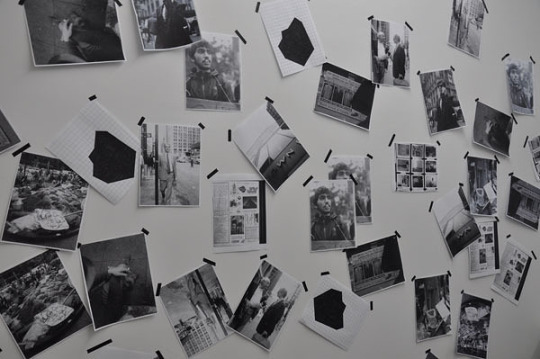
Note posted April 10, 2020: the Arts & Sciences Projects website will be transitioning entirely to Tumblr as of May 1, 2020 due to our web host shutting down. We are posting images and texts from previous exhibition, events, and publications.
Hypothesis Testing 2: Instant Media Dispatch (redux)
Arts & Sciences Projects, NY
October 13-14, 2011
6-8pm (both days)
For the second round of Hypothesis Testing, our on-going series of events designed to test ideas and concepts in the public realm, freelance photographer Miles Dixon will collaborate with Martin Masetto and Philip Tomaru in producing Instant Media Dispatch (Redux), a photo zine centered on Chinatown and TriBeCa (the two neighborhoods closest in proximity to Arts & Sciences Projects).
With Instant Media Dispatch (Redux), we aim to explore a hybrid model of new media production that bridges analog, digital, and performance-based modes of production/dissemination. The project draws its inspiration from the original Instant Media Dispatch (also known as the Journal of Quick Art), an obscure, scrappy DIY newsletter published in 1978 by Andrew Nevai and Buster Cleveland, now in the Franklin Furnace artists’ publication archive at the Museum of Modern Art.
For Instant Media Dispatch (Redux), Arts & Sciences Projects will temporarily transform itself from primarily a site for the exhibition of art to a site for the rapid conceptualization, production, and circulation of art. In the first 4-hour phase of the project, Dixon will arrive at Arts & Sciences Projects, where he will be dispatched to the surrounding area to collect primary source material via the medium of instant photography. The project proceeds with a rapid-fire editorial selection process with Masetto and Tomaru, and then a short-run production of Instant Media Dispatch (Redux). Real-time posts of images, text, and video will reveal the performative aspects of art production. The project concludes on the same day with multiple modes of dissemination -- including a public exhibition, free circulation of the zine, and distribution of images via social media (Tumblr, etc.).
Updates: Ryan Compton joined the project midway through the day by contributing several line drawings and texts (some derived from his 2010 zine NYC Subway Text Collage). The final zine, titled I.M.D. (Redux), presents an instantaneous perspective on the raucous Occupy Wall Street (OWS) protests, located 10 blocks south of Arts & Sciences Projects. The jagged lines, grids, and subverted advertising texts featured in Compton's pieces provide a conceptual counterpoint to the imagery of corporate America and discontented youth found in Dixon's instant photographs.
October 13 and 14, 6-8pm: stop by for free copies of Instant Media Dispatch (Redux) and an exhibition of instant photography by Miles Dixon.
Visit our Tumblr for additional photos posted in semi-real time documenting the process of producing I.M.D. (Redux) on October 13, 2011.
Originally from New Hampshire, Miles Dixon is a freelance photographer in New York. His work has been featured in the New York Times and the New York Post.
Ryan Compton mixes cultural experiments with drawing, installation, and new media tools to explore context and conditioning within contemporary society. He has exhibited in group shows and projects at the Tate Modern, X Initiative, John Connelly Presents, White Box, and Foxy Production.
0 notes
Link
Open letter from Martha Wilson, Founding Director of Franklin Furnace Archive:
Franklin Furnace is an undisputed authority on "performance art," a visual art field that incorporates dance, theater, music, and other traditions in hybrid, and often, activist works that define our contemporary existence. For three decades, Franklin Furnace has given Fund grants to emerging performance artists selected by peer review so that they may produce their first major works in New York.
During the “Culture Wars” of the late 80s and 90s in this country, Franklin Furnace was a steadfast defender of artists' right to freedom of expression. As a result, the organization got in trouble multiple times with federal representatives and agencies. With the arrival of a new president, we anticipate artists will continue to take urgent social issues such as rape, health, race, immigration, poverty, cronyism, ecology, surveillance, religion and speech itself as subjects of their work.
Support of emerging individual performance artists and collaborations through the Franklin Furnace Fund enables them to prepare major works that invariably range beyond the boundaries of conventional performance practice, changing cultural, social and sometimes political discourse: Three of the “NEA Four” artists, Karen Finley, John Fleck and Holly Hughes, were Franklin Furnace Fundwinners; as was Pope.L, whose 2002 retrospective at the Maine College of Art was denied National Endowment for the Arts funding by outraged legislators. With the new administration proposing to eliminate funding for both the NEA and the NEH, Franklin Furnace renews its commitment to the Fund.
The Fund has consistently identified emerging talent in advance of wider recognition: Tanya Barfield, Monstah Black, Jibz Cameron, Cassils, Patty Chang, Papo Colo, Sue de Beer, Zackary Drucker, Sherman Fleming, Coco Fusco, Kate Gilmore, Beatrice Glow, Pablo Helguera, Murray Hill, Xandra Ibarra, Joseph Keckler, M. Lamar, Liz Magic Laser, Shaun Leonardo, Kara Lynch, Taylor Mac, Erin Markey, Julie Atlas Muz, Rashaad Newsome, Brooke O’Harra, Jeanine Oleson, Clifford Owens, Pope.L, Nicolás Dumit Estévez Raful, Royal Osiris Karaoke Orchestra, Emily Roysdon, Dread Scott, Pamela Sneed, Saya Woolfalk, Chin Chih Yang and Ricardo Miranda Zuñiga presented major works for the first time with Fund support. We believe this success is due to the composition of Franklin Furnace's peer review panels, which represent a diverse range of practice, ethnic and cultural background, sexual orientation, age and physical ability, as well as familiarity with new technology.
We believe it is imperative to support emerging performance artists anew with the Franklin Furnace Fund CALL FOR ARTISTS, deadline April 1, 2017.
Martha Wilson
Founding Director
1 note
·
View note
Link
Artist: Ree Morton
Venue: Institute of Contemporary Art, Los Angeles
Exhibition Title: The Plant That Heals May Also Poison
Date: February 16 – June 14, 2020
Click here to view slideshow
Full gallery of images, press release and link available after the jump.
Images:
Images and works courtesy of © The Estate of Ree Morton; courtesy Alexander and Bonin, New York and Annemarie Verna Galerie, Zurich. Photos by Jeff McLane.
Press Release:
The Plant That Heals May Also Poison is the first major United States exhibition of artist Ree Morton (1936-1977) in nearly four decades. The exhibition features several rarely seen works, including a selection of installations, drawings, sculptures, paintings, and archival materials which span a single decade of artistic production before Morton’s untimely death in 1977.
Throughout her career, Morton produced a philosophically complex body of work rich in emotion. Though celebrated by peers and younger artists, Morton’s influence on contemporary art remains considerable yet muted, her legacy widely underrecognized. The eclectic arc of Morton’s practice was rooted in Postminimalism, the inclusion of personal narrative—through literary, theoretical, and autobiographical references—and use of bold color and theatrical imagery infused her objects with sly humor and a concern with the decorative, generating a feminist legacy increasingly appreciated in retrospect. Reimagining tropes of love, friendship, and motherhood, while radically asserting sentiment as a legitimate subject of artmaking, Morton’s conceptually rigorous work demonstrates generosity towards the viewer, its spirit of playfulness and joy inflecting all aspects of the exhibition.
Organized by the Institute of Contemporary Art, University of Pennsylvania, the exhibition is accompanied by a fully illustrated catalogue co-published with Dancing Foxes Press with texts by Kate Kraczon, the exhibition’s curator; artist Nayland Blake; Kathryn Gile; and scholars Roksana Filipowska and Abi Shapiro.
Ree Morton’s initial engagement with drawing influenced much of her early work. While living in Jacksonville, Florida, with her three young children, Morton took evening drawing classes at a local museum; she later committed to focusing on being an artist, completing a BFA at the University of Rhode Island in 1968 and an MFA at the Tyler School of Art in Philadelphia in 1970. Wood Drawings (1971) is the earliest work in the exhibition and marks a transition from the minimalist and loosely gridded forms she produced while in graduate school. These intricate small sculptures covered in felt-tip markings signal both an interdisciplinary approach to drawing and Morton’s nascent fascination with wood as a material, both the natural structure of found branches and logs as well as commercially cut wood. Paintings and Objects (1973), installed adjacent to Wood Drawings, features four wooden armatures that prop and push at a canvas pinned to the wall—one of the few remaining sculptural works from this period of Morton’s practice. Nearly all of these early pieces were repeatedly reconfigured into various formations that she leaned against the walls and corners of her studio, rejecting traditional systems of medium specificity and combining elements of painting, drawing, and sculpture.
She presented Souvenir Piece (1973), inspired by a summer in Newfoundland, Canada with her three children, as an installation for her fall 1973 solo exhibition at Artists Space, New York. Only two sections of this work remain, one of which is included here. Like many of Morton’s pieces, the numbers three and four can be counted among the objects—four split logs on the low green platform, for example—and she references her three children by name, as well as friends and family, in many other works. The wood and stones assembled on the table may allude to an accumulation of mementos and memories from that period of her life. She would continue the wood motif from this body of work in the sculpture See Saw (1974) and her later Woodgrain drawings (c. 1974).
Of the artist’s surviving drawings from the early 1970s, many gesture toward a form of mapping that became increasingly explicit in her early installations. With borders and fences, dashes that enclose, and silhouettes or tracings of objects both present and absent, works such as Game Map Drawings (c. 1972–73) and the series Newfoundland Drawings (1973) reveal concerns with landscape, limitations, and organic shapes that she maintainedthrough her final bodies of work. Game Map Drawings depicts aerial views of pathways and hills in a countryside. Morton created the Newfoundland Drawings (1973) after her vacation on the Canadian island, which Morton told her friend Marcia Tucker (former Whitney Museum curator and founding director of the New Museum in New York) was the happiest summer of her life. The drawings’ cartographic references are rooted in the knobby texture of logs and branches Morton sketched in the notebook she kept during her trip.
Looking to other disciplines outside of the arts, such as philosophy, literature, and botany, Morton’s work often referenced her personal life. Before pursuing
an arts education, she studied nursing, which greatly influenced the Line Series (1972–74), one of which are included in this presentation. These drawings feature soft, lyrical lines that roam across the surface of the paper around an array of other shapes, reminiscent of the chromosomes that Morton recalled observing under a microscope during her studies.
In the summer of 1974, Morton discovered two horticultural texts that were highly influential, Weeds of the Northeast: Aids to Their Identification by Basal-leaf Characteristics (1970) and Wildflowers Worth Knowing (1917). Drawings of this period, such as Untitled (Woodgrain, Scaley Bulb), Yellow Clintonia, Bitter Buttons, and Broom-Rape Family (all works produced in 1974) depict wildlife species from nature and outline the names, images, and descriptions of various flora; The Plant that Heals May Also Poison, a wall sculpture which opens the exhibition, names plants that have medicinal qualities yet have some toxic properties. While Weeds of the Northeast became the namesake of a series of Morton’s drawings, installed here on woodgrain wallpaper as Morton did for their debut presentation in 1974, the comical Victorian moralism of the 1917 publication became a primary source of text for many of her drawings and sculptures.
Morton worked with celastic, a textile infused with plastic that becomes malleable when wet with solvent, for the first time in spring 1974 while teaching at the Philadelphia College of Art. After a male colleague’s snide remark that “women should stick to bake sales” in response to her participation in the school’s Women’s Faculty Show, she used the material to create bows and drapery decorating the wall behind a platform where she and her students displayed cookies and cakes as the work Bake Sale (1974).
She continued to experiment with celastic as a visiting artist at the University of Montana, during a period that seemed unproductive to the artist initially but signaled an important turn in her work. For Bozeman, Montana (1974), created during this time, Morton applied celastic to clay letters and painted the surface once hardened. The playful, celebratory wall piece names her students as well as various activities, such as playing pool, fishing, and drinking beer. The work marks two important milestones in Morton’s developing practice: in addition to using celastic with text for the first time, she also introduces the use of electric lightbulbs to the sculptures.
Morton’s practice expanded to incorporate performance and public works that reflected upon her community of friends and fellow artists. In June 1975 Morton installed the ambitious outdoor project Something in the Wind (1975), a collection of over one hundred nylon flags strung across the rigging of a nineteenth-century sailboat docked in New York’s East River. This was a public project with the South Street Seaport Museum, and each flag was dedicated to family members and friends, including many
New York-based artists, such as Laurie Anderson, Gordon Matta-Clark, and Cynthia Carlson. These flags celebrated her wide-ranging personal and social relationships; for Morton, sentimentality was a critically important component of her work, visually articulating her role not only as an artist, but also a teacher, a mother, and a friend. This exhibition presents a selection of the flags from Something in the Wind, as well as a short film documenting the exhibition at the South Street Seaport.
Maid of the Mist (1976) responded to a Native American folktale of the same name about a maiden’s annual voyage in a fruit and flower-covered canoe over Niagara Falls as a sacrificial bride to the river. In her outdoor performance, Morton, alongside other artists-in-residence at Artpark in upstate New York, carried a large yellow celastic ladder to a hillside leading into the entrance of the Niagara River, joining it with a life preserver adorned with celastic florals. Morton stood at the edge of the water with an additional life preserver tied to her waist with rope, and after throwing the preserver into the river, she cut the connection of the rope so it could float free. In performing a symbolic rescue of the maiden using a ladder and life preservers, Morton established a contemporary continuation of a narrative of feminine love and sacrifice.
Morton kept an extensive archive of materials, including a collection of notebooks now housed at the Museum of Modern Art, New York, and accessible online through the Franklin Furnace Archive. Presented here are select drawings, sketches, and studies alongside documentation that reveal the evolution of her practice, from slides of experimental work in her Philadelphia studio to installation images from exhibitions and projects throughout the United States.
Morton’s final project, Manipulations of the Organic (1977), focused on Chicago-based architect Louis Sullivan (1856–1924) and was developed as a frieze-like installation of fourteen paintings. She was a guest artist at the School of the Art Institute of Chicago that spring, surrounded by Sullivan’s architectural influence throughout the city and fascinated by his portfolio of drawings A System of Architectural Ornament, which was commissioned by the school’s library in 1924. The Institute of Contemporary Art, Philadelphia, created this installation in the originating presentation of this exhibition to approximate the drawings and studies she made leading up to her death in April 1977. Here, Manipulations of the Organic is represented by a series of drawings similar to those featured in the completed work.
The shapes Morton used in several celastic works, all produced in 1974, veer from the celebratory to the funerary—glittery banners and ribbons vying with the melancholic symbolism of gravestones. The pithy phrasing of Terminal Clusters mixes with more personal references such as those in Maternal Instincts, which includes the initials of her three children. Noting her experience as a housewife, Many Have Run Away, to Be Sure explores feminine clichés and the bow motif (or beaux, a homonym evoking the Beaux-Arts, a highly decorative, neoclassical architectural style) that began with Bake Sale. Similarly, Don’t Worry, I’ll only read you the good parts (1975) similarly radiates the dark humor that infuses much of this body of work.
The series Regional Pieces (1976) are paintings of various seascapes and sunsets produced during a winter spent as visiting faculty at the University of California, San Diego. The diptychs are framed by curtains made with celastic, adding a decorative flourish that is both theatrical and domestic. The top panel depicts a sunrise, culled from postcards the artist collected, and the bottom features images of local fish. Highlighting Morton’s time spent on California’s beaches, the Regional Pieces are also in dialogue with historical painting tropes such as still life and landscape painting.
Link: Ree Morton at Institute of Contemporary Art, Los Angeles
from Contemporary Art Daily https://bit.ly/2SWCOVF
0 notes
Video
vimeo
The American Folk Art Museum, New York City June 19, 2019 On occasion of the exhibition 'Made in New York City: The Business of Folk Art' Speakers: Nona Faustine was born and raised in Brooklyn, New York. She is a graduate of The School of the Visual Arts and The International Center of Photography at Bard College MFA program. Her work focuses on history, identity, and representation, evoking a critical and emotion understanding of the past and proposing a deeper examination of contemporary racial and gender stereotypes. Faustine’s images have received worldwide acclaim; they have been published in a variety of national and international media outlets such as Artforum, The New York Times, Huffington Post, Hyperallergic, The Guardian, The New Yorker, and The Los Angeles Times, among others. Her work has been exhibited at Harvard University, Rutgers University, Maryland State University, Studio Museum of Harlem, Brooklyn Museum, African American Museum in Philadelphia, Schomburg Center for Black Research in Harlem, the International Center of Photography, Saint John the Divine Cathedral, and many other institutions around the country. Her work is in the collection of the David C. Driskell Center at Maryland State University, Studio Museum of Harlem, Brooklyn Museum, and the Carnegie Museum in Pennsylvania. Her work is currently on view in the group exhibition Perilous Bodies at the Ford Foundation Gallery. Beatrice Glow is an interdisciplinary artist who leverages participatory performance, painting, experiential technology collaborations, olfactory art, sculptural installations, and video to shift dominant narratives. She is a 2018–2019 Smithsonian Artist Research Fellow and 2018–2019 Smack Mellon Studio Program Artist. She was a 2017–2018 ZERO1 American Arts Incubator artist amplifying indigenous and Afro-Ecuadorian voices. Her 2016–2017 Asian/Pacific/American Institute at New York University residency led to virtual and augmented reality projects “The Wayfinding Project” and “Mannahatta VR,” and public installation “Lenapeway” in allyship with indigenous environmental stewardship. She received a 2013 Franklin Furnace Fund grant for “Floating Library,” a pop-up public space aboard the Hudson River’s Lilac Museum Steamship, which attracted more than four thousand visitors. As a 2008–2009 Fulbright Scholar, she developed a migratory museum and trilingual artist book on Asian migration to Peru. Notable activities include solo exhibitions Spice Roots/Routes (2017) at NYU Institute of Fine Arts, Aromérica Parfumeur (2016) at Museo Nacional de Bellas Artes de Chile, and Rhunhattan Tearoom (2015) at Wave Hill; group shows at Honolulu Biennial 2017, Park Avenue Armory, and Galeri Nasional Indonesia; and a Duke University Press’ Cultural Politics Journal artist feature. As a Hemispheric Institute council member, she co-founded the Performing Asian/Americas: Converging Movements workgroup. Moderator: John Kuo Wei Tchen is a historian, curator, and writer. Professor Tchen is the Inaugural Clement A Price Chair of Public History & Humanities at Rutgers University – Newark and Director of the Clement Price Institute on Ethnicity, Culture & the Modern Experience. He is founding director of the A/P/A (Asian/Pacific /American) Studies Program and Institute, and part of the founding faculty of the Department of Social and Cultural Analysis at New York University. In 1979–1980, he co-founded the Museum of Chinese in America, where he continues to serve as senior historian. He was the senior historian for a New-York Historical Society exhibition on the impact of Chinese Exclusion Laws on the formation of the United States, and also senior advisor for the two-hour “American Experience” PBS documentary with Ric Burns and Lishin Yu on the “Chinese Exclusion Act.” Yellow Peril: An Archive of Anti-Asian Fear (2014) is a critical archival study of images, excerpts, and essays on the history and contemporary impact of paranoia and xenophobia. Tchen is also a founder of the New York Newark Public History Project (NYN PHP), funded by the Ford Foundation, which will reframe the history of the estuarial region starting with the twined foundational histories of dispossession and enslavement (work emerging from serving as a Commissioner on the NYC Mayor’s Commission on Monuments.) His Below the Grid Project is pioneering creative historical storytelling with smart, location-sensitive wearable tech.
1 note
·
View note
Video
vimeo
SEEMRIPPER from Nina A. Isabelle on Vimeo.
SEEMRIPPER: a conceptual video-performance by Nina Isabelle
Seemripper was produced using The Self-Limiting Conceptual Video Production Process- a system that interlaces action, duration, direction, speed, sound, color, sequence, subject and object to form a linear audio and visual arrangement. The Self-Limiting Conceptual Video Production Process was designed as a system to sidestep consciousness in order to access lateral dimensions of awareness and is a continuation of The Video Manifestation System released by Human Trash Dump in January 2018. (archive.org/details/htdc005
The video-performance frames the artist as a self replicating organism caught in a recursive loop of infinite destruction and renewal generated by the physical and quantum relationships between fire, water, air, metal and earth.
The project was initiated by Linda Mary Montano as part of 'In Honor Of,' a performance series Curated by Nicolás Dumit Estévez Raful with curatorial fellow JP - Anne Giera at The Elizabeth Foundation in New York City on October 20, 2018. Performers were nominated by artists featured in 'As Far As The Heart Can See' (Nao Bustamante, Billy X. Curmano, Irina Danilova & Project 59, Beatrice Glow, Ivan Monforte, Linda Mary Montano, Praxis (Delia & Brainard Carey), Beth Stephens & Annie Sprinkle, and Martha Wilson & Franklin Furnace Archive) and include former mentees, current students, assistants and younger artists whose work they admire: Elena Bajo Bajo, Sindy Butz, Larissa Gilbert, Nina Isabelle and Xinan (Helen) Ran.
Special thanks to Linda Mary Montano for the nomination, Jennifer Zackin for use of chop saw and welder, Ever Peacock for flight scene camera operation, and B.G. Isabelle for playing her flute.
0 notes
Text
Two Women in the Art World Reflect on the Past to Imagine the Future
http://fashion-trendin.com/two-women-in-the-art-world-reflect-on-the-past-to-imagine-the-future/
Two Women in the Art World Reflect on the Past to Imagine the Future
In partnership with GUCCI.
M
y mom, a former historic preservationist, swears she can do what so many voyeurs wish they could: hear walls talk about all they’ve seen. She’s like a house-whisperer for old buildings, a medium of storied districts, a bridge between past and present of landmarked grounds.
My own mind is nowhere near as filled with historical research logged or information gathered, but my mom has taught me to walk through neighborhoods with an awareness of its many dimensions, its many pasts, and its varied depends-who’s-looking present.
Soho is a prime example of this kind of space with a storied past. What is now very much a shopping destination was at one time, during the 1970s and 80s especially, an artistic hub — a place where art, music, fashion and creativity in its many forms converged (if not clashed together like drum cymbals). But just because the neighborhood’s focus has shifted doesn’t mean its gaze is gone entirely. In addition to the Soho galleries that still exist, new art world stories are being made.
On May 6th, Gucci opened its first-ever presence in Soho at 63 Wooster. We partnered with Gucci to celebrate this opening and pay homage to the neighborhood’s artistic roots. To do so, I spoke with art activist Kimberly Drew and artist Sue de Beer about their own experiences South of Houston. De Beer showed her work in the area, while Drew did a residency there — both of them on different paths, linked by a Soho string. Meet these two women below. Maybe through their stories, you’ll be able to catch the whisper of another era.
Writer, Art Activist
Tell me about your involvement in the art world. How did you get started in it?
I studied art as an undergraduate, I currently work in the art world, and I work as an advocate for the arts. What that means is I have a keen interest in making the world of art — specifically visual and performing arts — more accessible to large audiences. I spend a lot of time thinking about how people feel really connected to music, or really connected to food; I’m trying to make the visual and performing arts barrier to entry a little bit lower than it’s been historically to help foster a similar connectivity.
My first introduction to the art world was during an internship at the Studio Museum in Harlem, which really provided my framework for how to engage with a general public, and my framework around how stories of art history, specifically, can be really restrictive. I studied art history in college, then spent the summer at the Studio Museum where I learned about artists who might never be in the curriculum that I was studying in school. Of course, there are schools with programs all over the world that exist to focus on specific genres of art, but it took me going to a really culturally-specific institution to realize there was a lot that I was missing.
What did you learn about public engagement?
I learned that people need an invitation to engage. This also happened simultaneously through my blogging efforts. I realized it’s one thing to say, “Here’s this really amazing artist,” and another thing to say, “Will you go see this work with me?”
In 2016, I did a residency at Recess, which, up until very recently, was housed in Soho, on Grand Street. The project was called “The Black Art Incubator” and I worked with Taylor Renee Aldridge, Jessica Bell Brown, and Jessica Lynne to make it happen. The idea was born during a drink date with Jessica Lynne. As we sat, we both expressed our frustrations about the art world. We thought, “There are so many creative ways we could bring people together. Why do people who work in galleries feel really separate from people who work in museums? Why do people who work in philanthropy feel really separate from these people who are working in other parts of the art world? What would happen if we brought all of these people together through a black cultural lens to have a more integrated dialogue about the way that different things happen and operate in the art world?” We broke our inquiries into four categories: thinking about finance, archiving, professional development, and criticism and developed workshops that would focus on each topic. Over the course of five weeks, we hosted about thirty free programs in the Soho community.
Given that Soho is so rooted in the art world’s history, what was it like to work in an art-centric space in Soho?
Because Recess is a public art organization, and “The Black Art Incubator” was open to the public Tuesday through Saturday, there was healthy mix of people who wanted to come to the space, or people who happened to just be walking through the neighborhood. I normally work primarily in digital spaces and in direct relationship to an archive rather than with the general public, so it was amazing to see what a holding space for this kind of thing looked like, especially in Soho. Soho is such a heartbeat in the way that New York operates.
When I think about Soho, specifically in the arts, and spaces that were super important, I think about Franklin Furnace, The Drawing Center, Sur Rodney (Sur)’s Gracie Mansion Gallery, and even over to spaces on the Lower East Side. These spaces were all critical hubs for art experimentation in the 70s and 80s. As lifelong student of art history, these spaces and the Soho lofts stick out to me as a radical sites that I hope to learn more and more about with every chance I get.
Whenever I think about the 80’s Soho art scene, I think about a real merging of art, music and fashion. Do you think we have that today in the same way?
I think there has always been a really clear wedding between art and fashion. Human beings have long used both art and fashion to communicate who they are. I don’t think that’s ever going to stop happening.
What’s interesting is that I couldn’t imagine an art world without fashion, or a fashion world without art. Even wearing something that’s super muted is a very particular aesthetic choice. My big hope and takeaway is that the way these things are historicized is done in a more vibrant way. I think there’s a lot more to be done in the way that history remembers fashion, or fashion is communicated. There’s a really strong arm around fashion journalism, but there isn’t the same kind of strong arm around fashion history, or how history is told through fashion — whereas art history is like, ironclad. I hope that marriage continues to happen so that stories are properly told, that things are interrogated, and that we continue to learn from how people have created things and how we’ve used those creations to tell who we are and where we are in a moment.
Since you did your residency in Soho, what areas feel super nostalgic to you?
41 Grand Street, which is where Recess used to be located. Going to The Drawing Center always feels significant and it’s in the same area. When I think of Soho, I really think about the intersection of Grand and Wooster. Deitch Projects is right there. Housing Works falls into my own Soho outline as a really important space, too, since it’s an organization that is as much about art as it is serving New York’s homeless community. Some of the great poets have performed there, there are so many book events there; it’s such a birthing place for culture. Of course, this is a contemporary read, but when I think of this triangulation between Housing Works, Angelika Film Center (at the very tip of Soho) and the Drawing Center, it reminds me why I love living in New York City, and part of why I remain committed to the creative community here.
What are your personal hopes for the future of the art world?
I think we’re in a moment of particular demand on our attention and literacy, so I hope that people really take a slower look at what’s going on in this particular cultural moment and think about the ways in which we can support it. It’s not just being a huge donor and buying a piece of work, it’s going to openings, it’s engaging with your friends who are thinking about creative outlets. Investigate the areas of art that peak your interest — and don’t stop just because you’ve hit a dead end in your research. My hope is that as citizens of our respective communities, we take time to remain curious.
Artist
Can you tell me about the moment or series of events that put you on the path to becoming an artist?
I had decided to become an artist when I was quite young. I was still in high school. I think a key moment for me was being expelled from high school [laughs]. Before that I was on a kind of academic trajectory, and no one in my family had ever become an artist or done anything creative. I think the idea of becoming an artist was confusing to them. My family also didn’t have a lot of connection to contemporary art or the contemporary art world. So as a young person, when I was expelled from school, because people’s expectations of me changed, I suddenly had this radical freedom.
I started looking at art. I was curious about it — it was unfamiliar to me, and I found it to be really challenging. I was living in a small town in Massachusetts, and I would take a bus into Boston to visit museums. I took some art classes and fell in love with it.
I also was looking to music for information about art (which doesn’t really make any sense). I was into the Velvet Underground at the time, so I discovered Andy Warhol through Lou Reed. Because of his music, I had this idea that New York was a place where artists lived. His music made me think, “I should be in New York.” So I applied to art schools there, got in, and moved. It was a lucky set of poorly-made decisions.
What was your first day in New York like — or your first day of art school, your first realization of, “I am actually in New York…for art school?” Did it live up to your expectations?
I didn’t really have realistic expectations. I didn’t quite know what or who artists were. I was going off this self-taught, feeling-in-the-dark drive that brought me here in the first place. But I do remember, in the first week, just feeling like New York was the place I really belonged, and art school felt really natural. It felt like home.
I had always felt like I didn’t really make sense in my small town — I was a bit different — so it was nice to be in a place that was so big and so much. There’s so much going on this city, so many different kinds of people; it felt electrifying, and it opened my mind and broadened my thinking.
Can you recall one instance when you were like, “Oh, this is an artist”?
There were so many. I was interested in Johanna Fateman, who was self-publishing ‘zines about contemporary art. I was friends with Dennis Cooper and he introduced me to West Coast artists and the scene out there.
A few exhibitions really made an impression on me as a young artist. One of them was this Nari Ward show at Deitch Projects [Happy Smilers] — it was a big installation piece with fire hoses and a fire escape in the middle, and he had painted the walls yellow, which I thought was a crazy color to choose. It felt shocking to me. The whole installation was immersive and beautiful.
1993 was the first time I saw the Whitney Biennial. It was my first encounter with a broad array of contemporary artists, and it became a touchstone that I compared other exhibitions to. I remember much later, comparing the ‘91 Biennial catalog to the ’93 Biennial catalog, and realizing that a dramatic shift had just happened in the art world right when I arrived in New York. Many artists of color were included, a lot of female artists were included in the show. To me it was a baseline, what was “normal.” It continues to be what feels “normal” to me.
The early 90s in New York was a brilliant time to begin to participate in the art world because of the energy at that time. Later, I think the art world boomeranged back and narrowed down again, and that was an awful shock to me: like the only male “group” shows, or only female “‘group” shows. But the art world goes in waves.
What part of the wave do you feel like the art world is in now?
Well, I think this is an exciting moment. Things seem to be opening back up. There’s all kinds of energy going on right now that I really love, that I haven’t felt in years. It makes my heart beat faster.
When the art world swung back into its conservative mode, all of these voices went missing. It was so depressing. So boring.
How do you think social media effects the art world today?
I like how social media changes who the gatekeepers are for content and ideas. It’s added an additional venue, or an additional access point that has nothing to do with the market or capital. Social media is about an image or an idea, like Kimberly Drew talking about power, history, and representation through what she posts. I also like to follow Liz Renstrom, who is one of the few female photo editors of Vice.
Your work was shown in galleries in Soho in the 90s — what was that whole experience like?
Oh. The art world was much smaller back then — or it felt that way as a young person in the space. Some of my friends who later became artists or gallery directors worked in the fashion boutiques in Soho to pay their rent.
There was this row between Grand Street and Wooster where there were some fantastic galleries and some great shows happening. I had some work with Stefano Basilico for a while. He had a small gallery space next to Friedrich Petzel. I did a show with Jeffrey Deitch at Deitch Projects.
I was briefly represented by Jack Tilton Gallery. I remember he had just taken on the artist Xu Bing, who did a show for Jack [A Case Study of Transference] that involved live pigs…
You must have so many great stories from this time…
So many. I remember I had a woman helping me sew these stuffed animals for my installation for the 2004 Whitney Biennial. She had a studio on Canal Street on the fifth floor of the building (places were accessible then that aren’t today because of New York City real estate), and we produced work there.
We didn’t realize how big the animals were until they were actually stuffed. We couldn’t get them into the elevator because they wouldn’t fit. I tried to squeeze them in the stairwell and they barely moved. The animals were two or three feet taller than me. It was like a five-story birth canal with this circular staircase, and there were three of those animals to get downstairs.
You couldn’t have a studio space on Canal Street today unless you owned it, but at the time, it all seemed very reasonable and very funny to be squeezing this giant purple lion thing five floors down.
You’ve been showing your work for 20 years now. What projects are you currently most excited about?
I’m getting ready for my show that opens on June 21st at Marianne Boesky Gallery. It’s my werewolf film, The White Wolf, that I’ve been working on for two-and-a-half years. I asked Yuka Honda, from the band Cibo Matto, to star in it because I’ve always been a fan of hers. She’s just magentic on camera.
I’ve also been thinking about the past recently, so I asked Marianne if we could show the first body of work I produced when I was a young artist in my twenties, which are these horror photographs I made between 1998 and 2000. So the werewolf film is the major installation, and then in a project room, we’re going to show these horror photos. I’m excited about it. I think the works will be in beautiful dialogue together. [Horror, as a genre] has a specific type of beauty. It has a sort of gracefulness to it. My work has always asked about the way that people are, or what people love, or what they fantasize about. It plays around with form and changes it, and pulls it apart, and puts it back together again in the wrong way. It asks a lot of questions about the nature of people.
10 PHOTOS click for more
Photos by Edith Young; Styled by Amelia Diamond; Makeup by Teddy Wilson; Hair by Sergio Estrada and Regard Tang.
0 notes
Photo
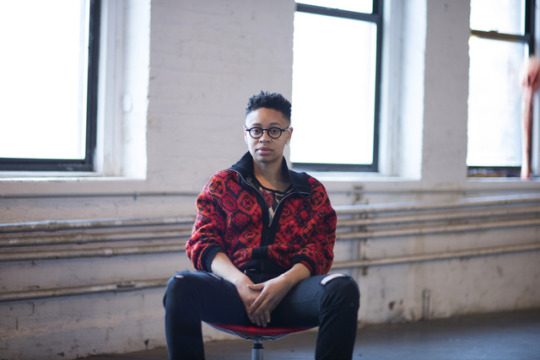
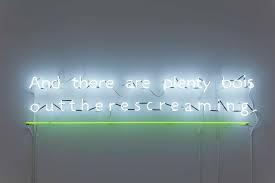
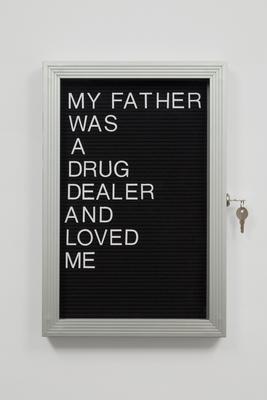
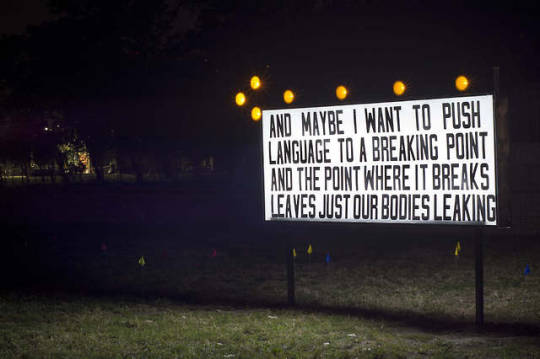
ARTIST TO KNOW | SABLE ELYSE SMITH
Sable Elyse Smith is an interdisciplinary artist and writer based in New York. Her practice considers memory and trauma while enacting an undoing of language. She works from the archive of her own body creating new syntax for knowing and not knowing, thereby marking the difference between witnessing and watching. To see is unbearable. She has performed at the Museum of Modern Art, the New Museum, Eyebeam, and Yerba Buena Center for the Arts, San Francisco, CA. Her work has also been screened at Birkbeck Cinema in collaboration with the Serpentine Galleries, London, Artist Television Access, San Francisco, and MoMA Ps1, New York. Her writing has been published in Radical Teacher, Selfish, Studio Magazine and with Recess Art’s Critical Writing Fellowship. She is currently working on her first book. Smith has received grants & fellowships from Creative Capital, the Queens Museum, Skowhegan School of Painting and Sculpture, the Franklin Furnace Fund, and Art Matters. She is currently part-time faculty at Parsons The New School for Design and will be a visiting Faculty at Virginia Commonwealth University this Fall in the Sculpture and Extended Media department.
http://sableelysesmith.com
Instagram: @sable_elyse
0 notes